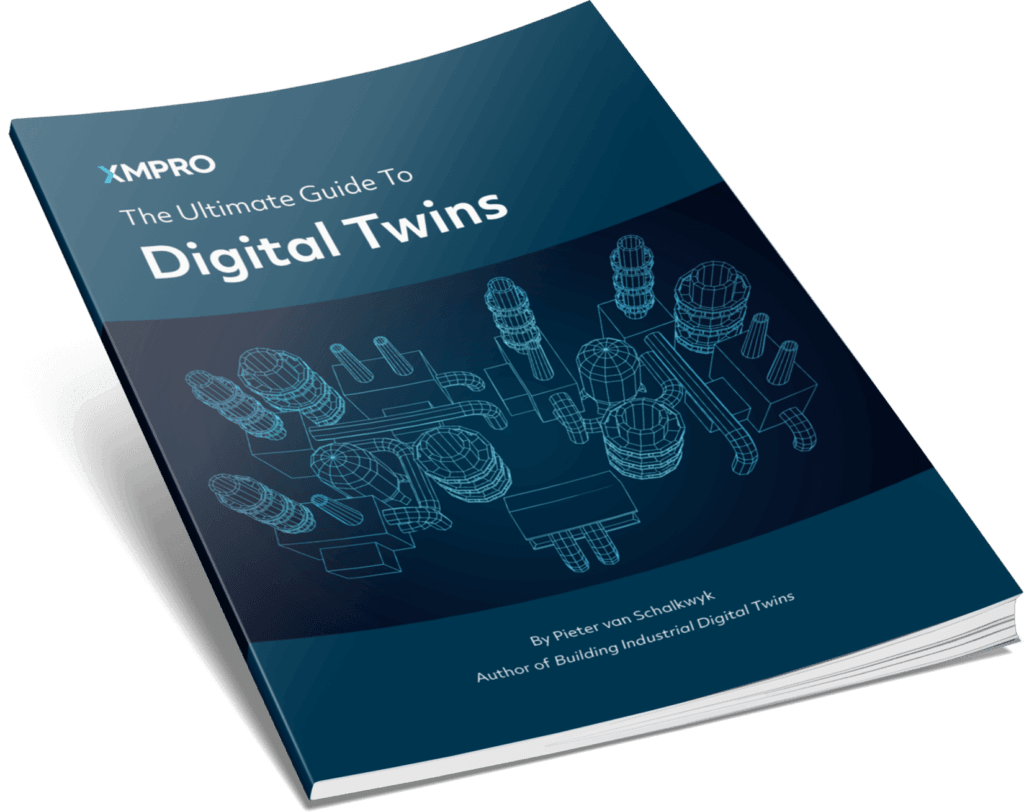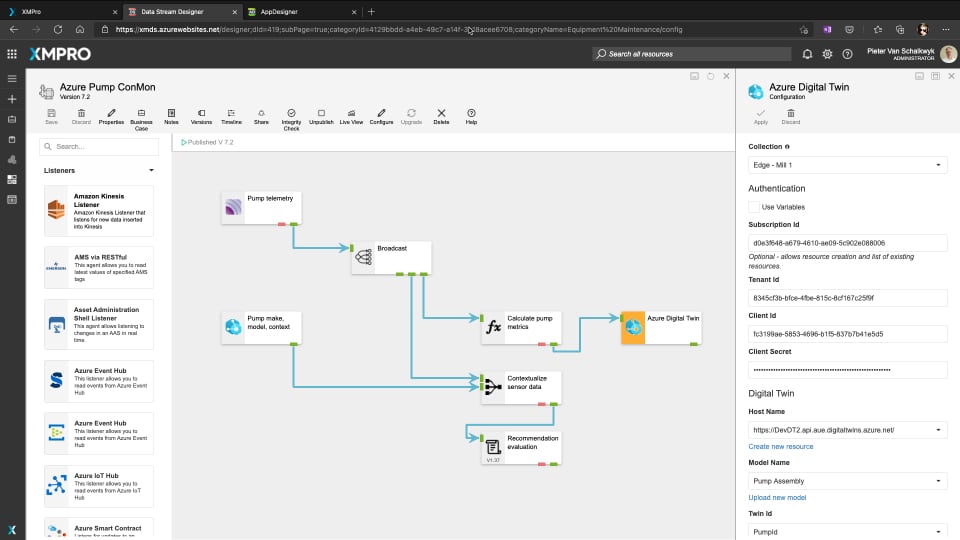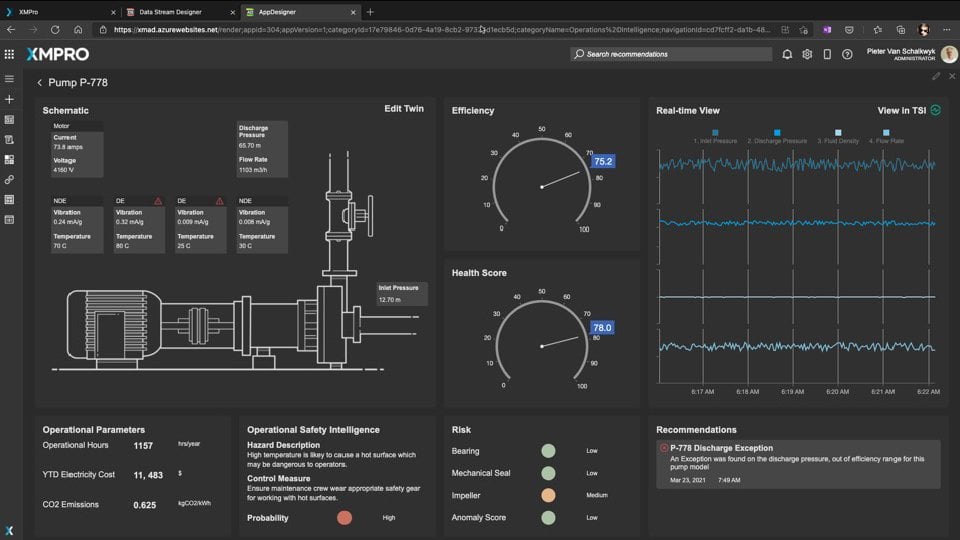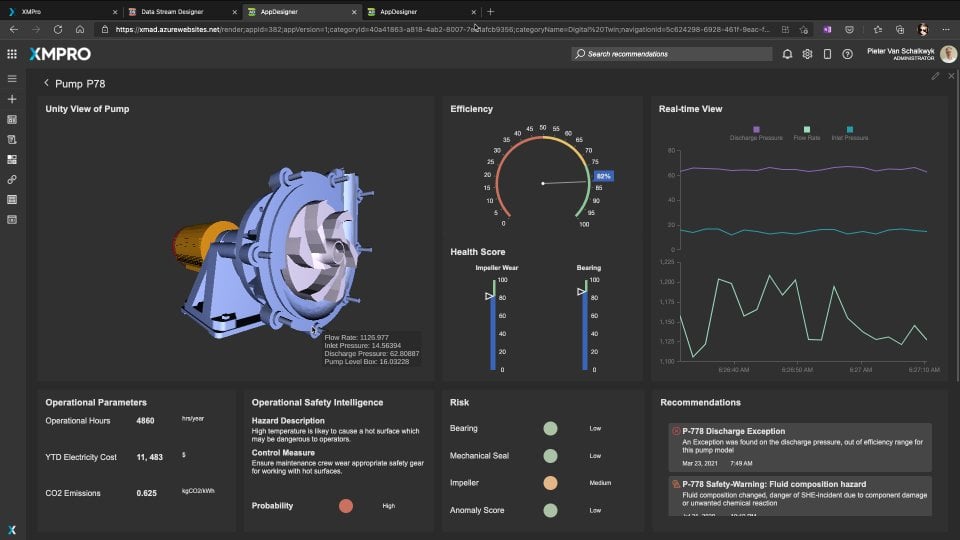Updated Feb 06 2024
Microsoft Azure Digital Twins : Everything You Need To Know
What are Microsoft Azure Digital Twins?
Microsoft Azure Digital Twins is an advanced IoT platform that empowers developers to replicate physical environments digitally, fostering a deeper understanding through simulation, analysis, and automation of connected ecosystems. It provides essential APIs, tools, and pre-built templates for efficient digital twin model creation and management. This platform stands out by offering in-depth insights into physical environments, enabling informed decision-making and addressing real-world challenges through precise modeling and analysis capabilities.
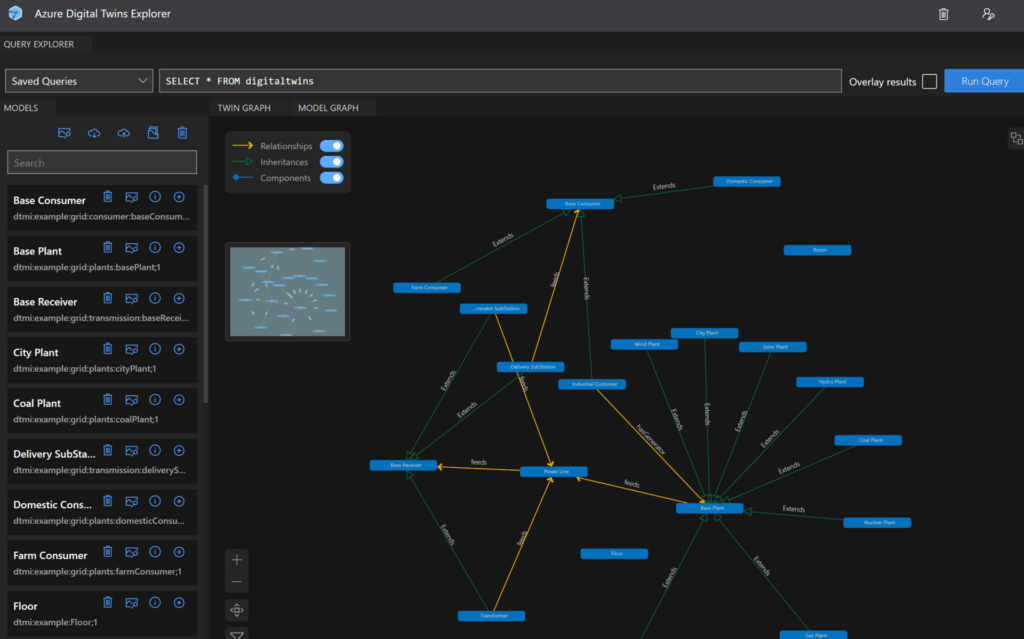
How does Microsoft Azure Digital Twins differ from other digital twins?
Azure Digital Twins is one of several platforms available for creating and managing digital twin models, but it has several features that set it apart from other options:
- Azure Digital Twins is built on top of the Azure IoT platform, which means it has native integration with other Azure services like Azure IoT Hub, Azure Stream Analytics, and Azure Data Explorer. This can make it easier to connect digital twin models to physical devices and systems, and to analyze and visualize data from those devices and systems.
- Azure Digital Twins includes a set of pre-built templates and sample models that can be used as starting points for creating digital twin models. This can help developers get started quickly and reduce the time and effort required to create a digital twin from scratch.
- Azure Digital Twins is designed to be highly scalable and can handle large numbers of digital twin models and devices. This makes it suitable for use in large-scale IoT projects and for use in industries such as smart buildings and smart cities.
- Azure Digital Twins allows for multiuser access and collaboration, this allows for different teams to work on different parts of the model and also allows for different stakeholders to access the same model with different level of permissions.
One lesser-known fact about Azure Digital Twins is that it includes support for spatial intelligence. This means that it can be used to create 3D models of physical spaces, and to analyze and visualize data in a spatial context. This can be useful for a variety of applications, such as creating digital twin models of buildings and other physical structures, and for analyzing and visualizing data from sensors and other devices that are spatially distributed. The spatial intelligence feature allows for more accurate representation of the real world, and allows for more detailed analysis of the data collected from IoT devices.
What are the top use cases for Microsoft Azure Digital Twins?
Azure Digital Twins is well suited for a variety of use cases, but some of the most common use cases include
1.Smart Buildings: Azure Digital Twins can be used to create digital twin models of buildings and other physical structures, and to analyze and visualize data from sensors and other devices in those buildings. This can be used to optimize building performance, improve energy efficiency, and enhance the occupant experience.
2.Smart Cities: Azure Digital Twins can be used to create digital twin models of entire cities and to analyze and visualize data from a wide range of sensors and devices that are distributed throughout the city. This can be used to optimize traffic flow, improve public safety, and enhance the overall livability of the city.
3. Industrial IoT: Azure Digital Twins can be used to create digital twin models of industrial environments, and to analyze and visualize data from sensors and other devices that are distributed throughout those environments. This can be used to optimize production, improve equipment performance, and enhance the overall efficiency of the facility.
4.Supply Chain Optimization: Azure Digital Twins can be used to create digital twin models of supply chain networks, and to analyze and visualize data from sensors and other devices that are distributed throughout the supply chain. This can be used to optimize logistics, improve inventory management, and enhance the overall efficiency of the supply chain.
5.Remote Monitoring and Control: Azure Digital Twins can be used to create digital twin models of remote environments, such as offshore platforms and remote mining sites, and to analyze and visualize data from sensors and other devices that are distributed throughout those environments. This can be used to monitor and control the environment, improve safety and reduce downtime.
These are just a few examples of the many use cases for Azure Digital Twins. It’s a versatile platform that can be used in many different industries, and for many different applications.
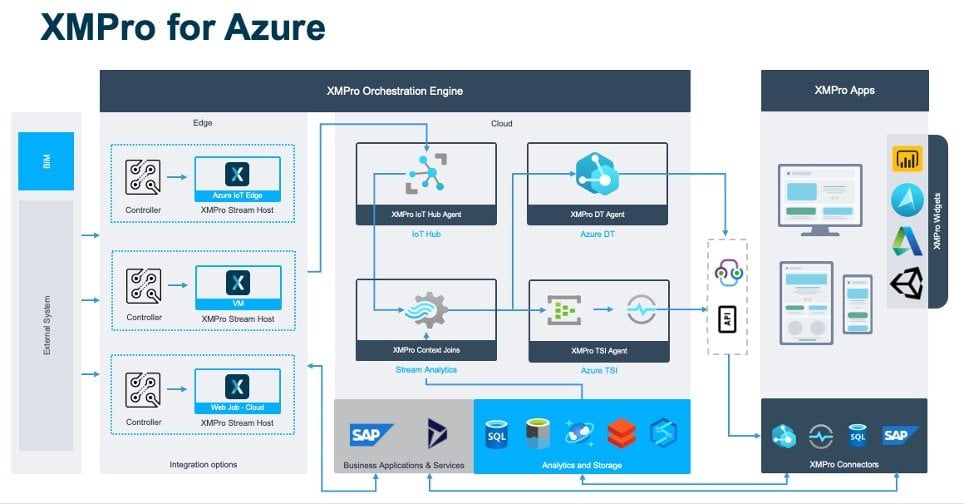
How can companies use XMPro to supercharge Microsoft Azure Digital Twins?
XMPro iDTS (Intelligent Digital Twin Suite) is a sophisticated software platform designed for the creation and management of digital twins, focusing on asset and process optimization across various industries. It offers real-time insights and predictive analytics for proactive decision-making, enhancing operational efficiency by identifying inefficiencies and optimizing workflows.
XMPro iDTS supports informed strategic decision-making through comprehensive data analytics, thereby improving risk management and operational planning. The platform integrates seamlessly with existing systems, ensuring scalability and flexibility for businesses of all sizes, and is tailored to enhance asset lifecycle management by facilitating predictive maintenance to extend asset life and minimize downtime. Through its focus on asset and process digital twins, XMPro iDTS enables organizations to achieve significant cost savings and maintain a competitive edge in the market.
XMPro iDTS not only offers a comprehensive suite for managing digital twins but also includes several key modules designed to enhance its capabilities and provide users with a robust set of tools for optimizing their operations. These modules include the Datastream Designer, XMPro AI, App Designer, and Recommendation Manager, each contributing to the platform’s flexibility and power in unique ways.
-
Datastream Designer: This module allows users to easily configure and manage the flow of data from various sources into the digital twin environment. It supports the integration of real-time data, enabling organizations to create accurate and dynamic representations of their assets and processes. The Datastream Designer is essential for ensuring that digital twins are always up-to-date and reflective of current conditions.
-
XMPro AI: At the heart of predictive analytics and decision support within the platform, XMPro AI leverages machine learning algorithms to analyze data and predict outcomes. This module enhances the platform’s ability to forecast future conditions, identify potential issues before they arise, and suggest optimal courses of action, making it a crucial tool for proactive management and maintenance strategies.
-
App Designer: The App Designer module provides users with the tools to create custom applications within the XMPro iDTS environment. These applications can be tailored to meet specific business needs, enabling personalized dashboards, reports, and interactive tools that support decision-making and operational oversight. This flexibility ensures that organizations can maximize the value of their digital twin data.
-
Recommendation Manager: This module complements the predictive capabilities of XMPro AI by not only identifying potential issues but also suggesting actionable recommendations. The Recommendation Manager uses data-driven insights to advise on maintenance schedules, operational adjustments, and other strategies to improve performance and reduce risk. It serves as a bridge between data analysis and practical application, facilitating informed decision-making across the organization.
Together, these modules enhance the XMPro iDTS platform’s ability to provide comprehensive asset and process optimization. By integrating real-time data analytics, AI-driven predictions, customizable application development, and actionable recommendations, XMPro iDTS delivers a powerful solution for organizations looking to leverage digital twin technology for improved efficiency, reduced costs, and strategic advantage in their operations.
Benefits of deploying XMPro on Azure
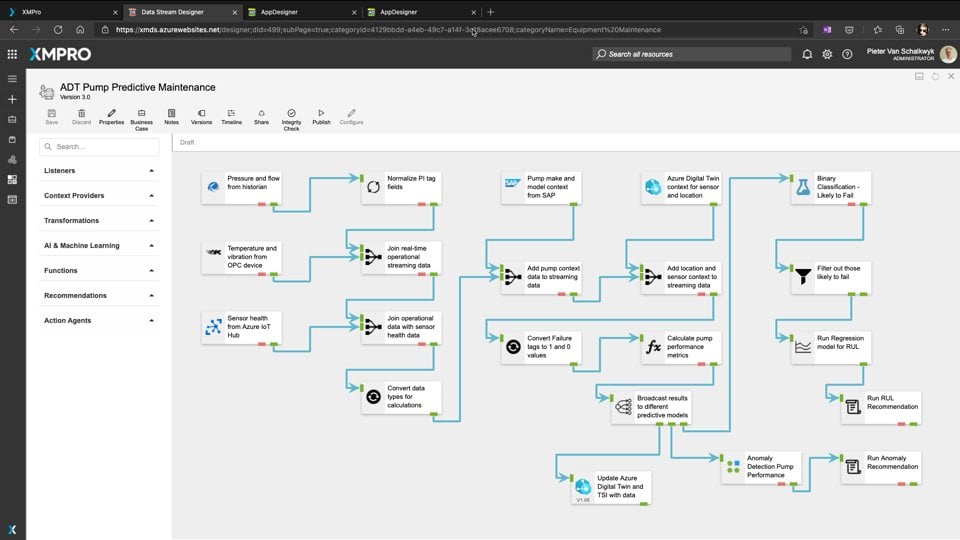
1.Scalability For Real-Time Data Orchestration
Ingesting large volumes of data at high velocity requires scalable cloud computing resources. By deploying your XMPRO Apps and Data Streams on Microsoft Azure, you can leverage their flexible, secure and robust cloud computing platform to provide your team with real-time decision support.
A powerful cloud platform becomes especially important when you rely on data coming in every second from thousands of assets across multiple plants. As an example, one of our customers ingest 77 million events per day through their XMPRO Data Streams.
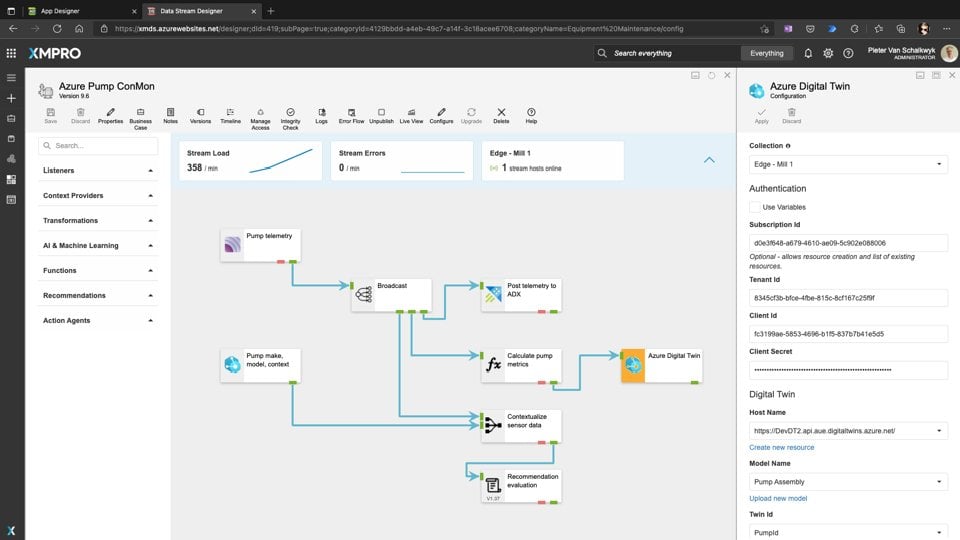
2.Leverage Pre-Built Connectors To Azure Services
Azure provides a suite of products you can leverage in your XMPRO Data Streams and Applications, from storing telemetry data in Azure Data Explorer (ADX) to creating digital twins in Azure Digital Twins. And our no-code approach makes these services even more accessible for users who don’t have an IT background.
As an example, the screen above shows how you can create new instances in Azure Digital Twins, upload DTDL models and set up new resources without leaving the XMPRO interface.
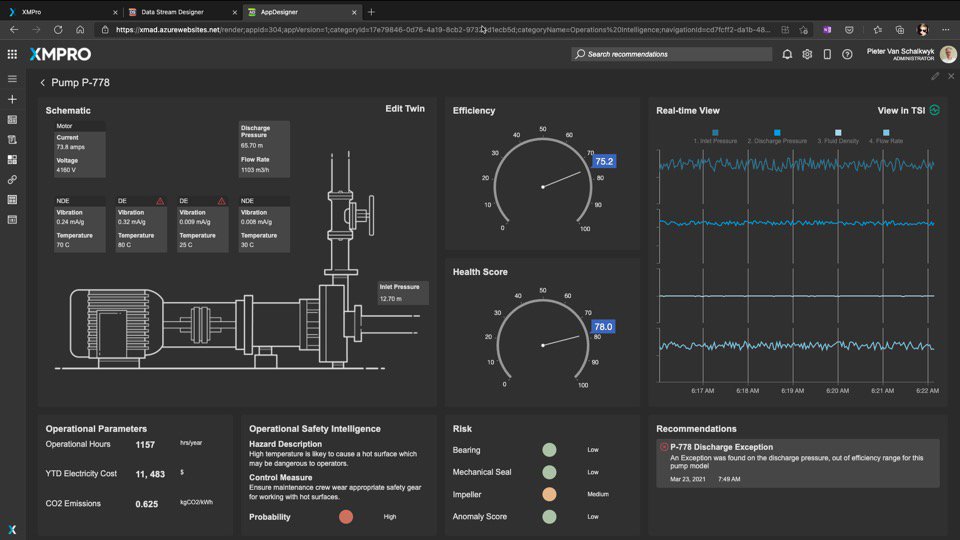
3.Integrate Machine Learning Into Your Apps
XMPRO makes predictive analytics from services like Azure Machine Learning consumable for end users in their day-to-day work, enabling them to make data-driven decisions.
But running these models to analyze data in real-time requires powerful and reliable cloud computing resources, which makes Azure an ideal deployment platform for AI-driven applications.
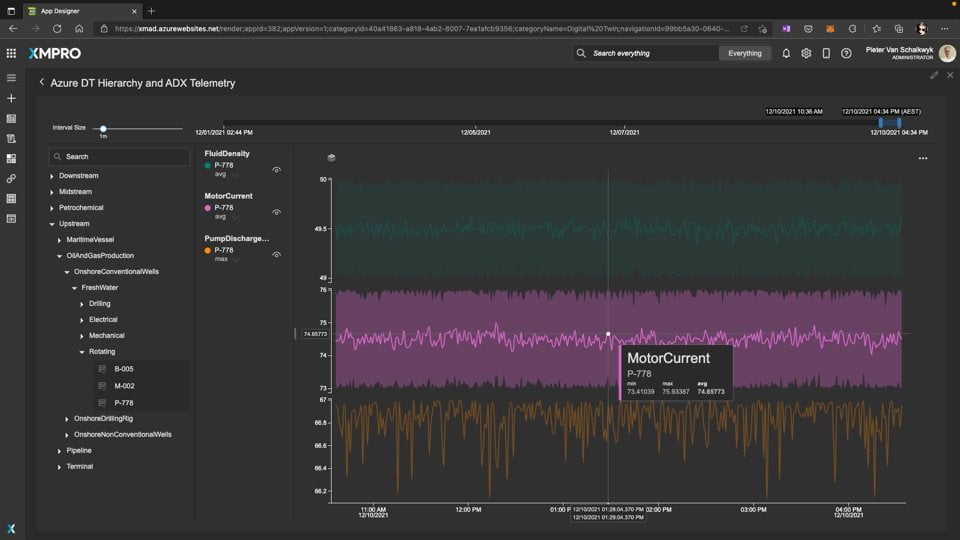
4.Manage Assets and Hierarchies in Real-Time
Integrate Azure Data Explorer (ADX) time series data and analytics with Azure Digital Twins with XMPRO’s No Code Application Composition toolset for a complete web-based historian and industrial analytics solution.
Create and manage an asset hierarchy with an XMPRO Asset Blueprint based Azure Digital Twins services.
Configure event triggers to create automated recommendations with prescriptive actions as well as event frames for future analysis of real-time events.

5.Simplify The Procurement & Billing Process
By purchasing your XMPRO license through the Azure Marketplace, you’ll be able to manage your XMPRO license and billing as part of your Azure account.
You’ll get a single, consolidated monthly bill from Microsoft that includes both your XMPRO and Azure charges.
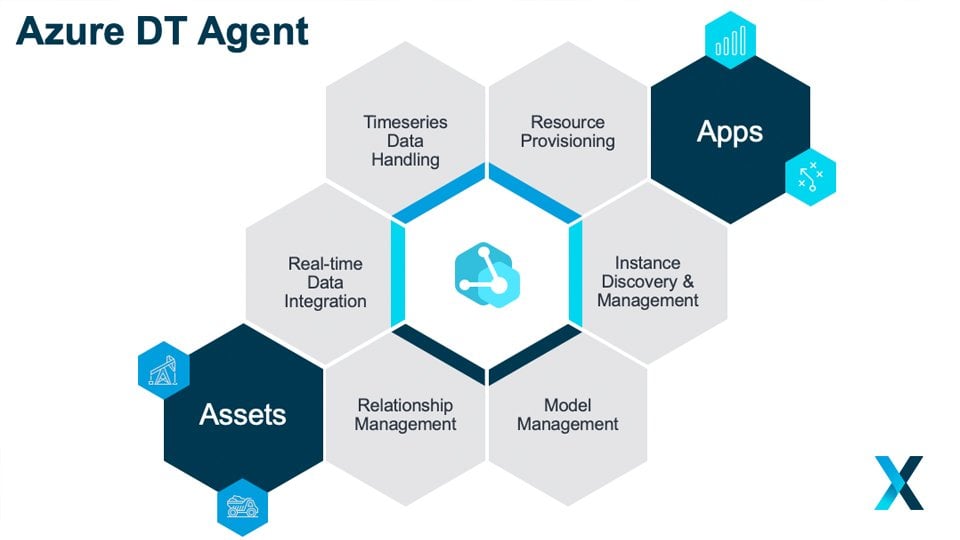
How The XMPro Agent for Azure DT Abstracts Complexity and Provides Additional Features
For companies with business-critical assets, creating apps to solve problems such as condition monitoring, real-time visualization, optimization, and simulation is crucial. However, when using Azure DT as the service for your digital twins and asset hierarchy, companies may run into a problem. Azure DT is a developer-focused tool, which can be complex and challenging for companies to use effectively.
That’s where XMPro Agent for Azure DT comes in. The XMPro Agent abstracts the complexity of Azure DT and provides additional features that make it easier for companies to use the platform effectively. Some of the key features of the XMPro Agent include the following:
Simplified Resource Provisioning
With the XMPro Agent, companies don’t need Azure certification or knowledge of the Azure Portal to create Azure DT services. This is important because Azure DT is a developer-focused tool, and without a strong understanding of the platform, companies may struggle to create and manage their digital twins and assets. The XMPro Agent handles all the resource provisioning for you. This saves companies time and effort, and reduces the need for specialized skills and knowledge.
Automated Instance Discovery
Another benefit of the XMPro Agent is that it automates the process of instance discovery. This is important because it saves companies time and effort, and reduces the risk of errors or omissions when creating digital twins. With the XMPro Agent, companies can simply set up the integration and let the Agent discover and create the digital twins automatically. This makes it easier for companies to get up and running with Azure DT and focus on solving their business problems.
Centralized Model Management
The XMPro Agent also provides companies with centralized model management, which makes it easier to manage and update their digital twin models over time. With the XMPro Agent, companies can register new models and twin definitions in a single, unified location. This gives companies a complete and centralized view of their digital twins, and makes it easier to manage and update their models as needed.
Holistic Relationship Management
The XMPro Agent also provides companies with the ability to manage relationships in the asset hierarchy. This is important because it helps companies understand the relationships between their assets and devices, and makes it easier to monitor and manage their systems. With the XMPro Agent, companies can see a holistic view of their connected devices and systems, and make informed decisions based on this data.
Real-time Data Integration
The XMPro Agent also integrates with data sources and ensures that the digital twin is updated in near real-time. This is important because it provides companies with accurate and up-to-date information about their assets and systems, and helps ensure that their digital twins accurately reflect the state of their devices and systems. With the XMPro Agent, companies can have confidence that their digital twins are always up-to-date and accurately reflect the state of their assets and systems.
Time-series Logging
Azure DT doesn’t handle time-series data, but the XMPro Agent can log telemetry into a cloud historian like ADX. This is important because it provides companies with a complete picture of their devices and systems over time, and helps them make informed decisions based on historical data. With the XMPro Agent, companies can see how their systems have been performing over time, and use this data to make informed decisions about their assets and devices.
In conclusion, the XMPro Agent for Azure DT provides companies with a simplified and more efficient way to use the Azure DT platform. With its additional features and benefits, companies can focus on solving their business problems and leave the technicalities to the XMPro Agent.
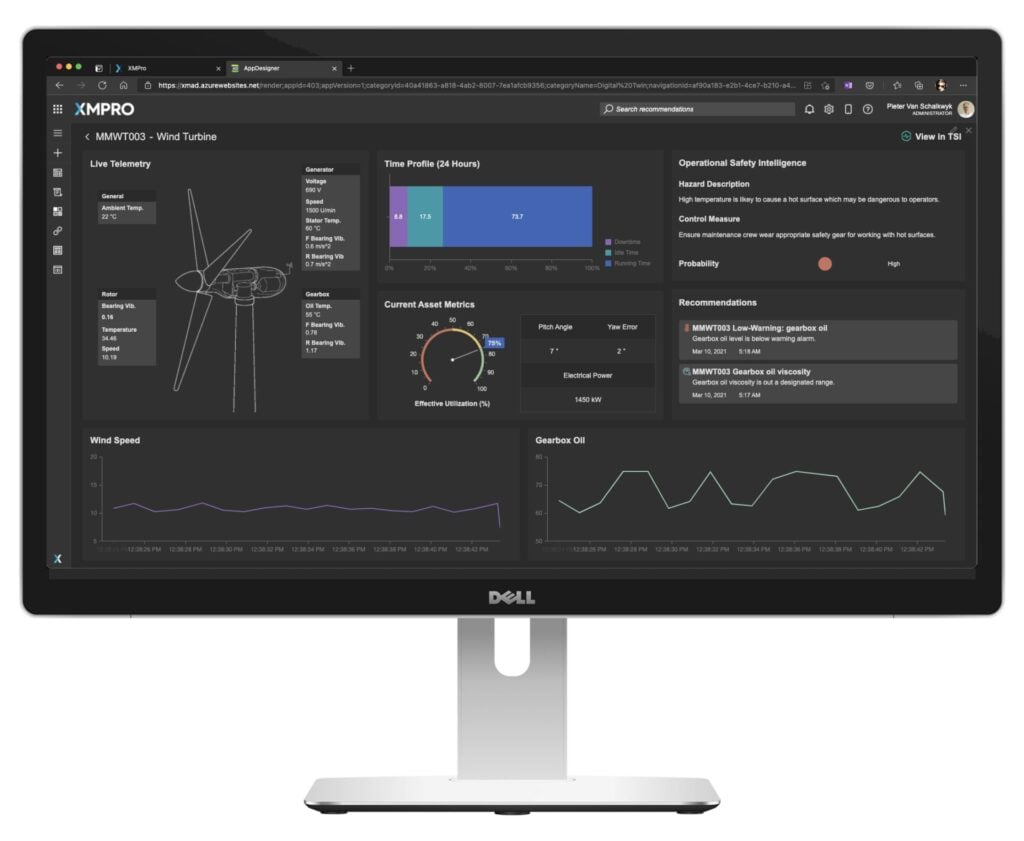
MORE ABOUT XMPRO & AZURE DIGITAL TWINS
In addition to the benefits listed above, companies can use XMPro to supercharge Microsoft Azure Digital Twins in several ways:
- Automating processes: XMPro allows companies to create custom workflows and decision trees to automate processes and make decisions based on data from the digital twin model. This can be used to automate the control of the physical environment, trigger alarms or notifications, and perform other actions in response to changes in the digital twin model.
- Enhancing decision-making: XMPro provides a visual interface to create, manage and monitor the workflows, this can help non-technical users to participate in the management of the digital twin and make better decisions based on the data from the digital twin.
- Creating a holistic view: XMPro allows for the integration of various data sources, such as IoT devices, ERP systems, CRM systems, and SCADA systems, to create a holistic view of the environment. This can help in making more accurate decisions and getting a better understanding of the environment.
- Streamlining operations: XMPro can automate repetitive tasks, such as data collection and analysis, which can save time and resources for companies and streamline their operations.
- Improving scalability: With the out of the box integration with Azure Digital Twins, XMPro can leverage the scalability and integration capabilities of Azure, which can help companies to handle a large amount of data and devices and easily scale their digital twin solution as their needs grow.
By integrating XMPro with Azure Digital Twins, companies can take advantage of the powerful capabilities of both platforms to automate processes, enhance decision-making, create a holistic view, streamline operations, and improve scalability.
Ready to Start Building Azure Digital Twins?
How can I get started with Microsoft Azure digital twins?
To get started with Microsoft Azure Digital Twins, you will need to have an Azure account. If you do not already have an Azure account, you can sign up for a free trial on the Azure website.
Once you have an Azure account, you can access the Azure Digital Twins service through the Azure portal. From there, you can create a new digital twin model by using the pre-built templates or by creating your own using the visual, drag-and-drop interface.
Here are some steps to get started:
- Log in to the Azure portal using your Azure account.
- Search for “Digital Twins” in the Azure Marketplace and click on the Digital Twins service.
- Click on the “Create” button to create a new digital twin model.
- Select the appropriate template or create your own using the visual, drag-and-drop interface.
- Connect your data sources, such as IoT devices, to the digital twin model.
- Use the data from the digital twin model to improve operations and make better decisions.
It’s also recommended to check the Microsoft Azure Digital Twins documentation, which provides detailed instructions and examples on how to create and manage digital twin models, as well as how to integrate with other systems. Additionally, there are also a set of tutorials and videos available on the Azure website that can help you get started with using the service.
Also, you can take advantage of the support from the Azure team, they can help you with the integration and provide guidance throughout the process.











